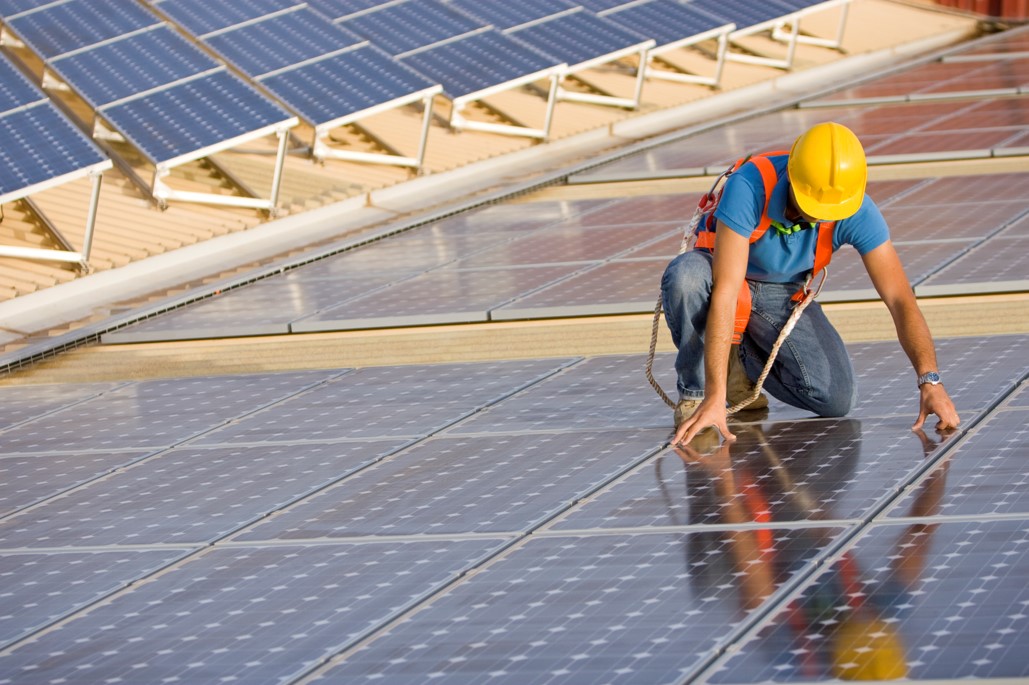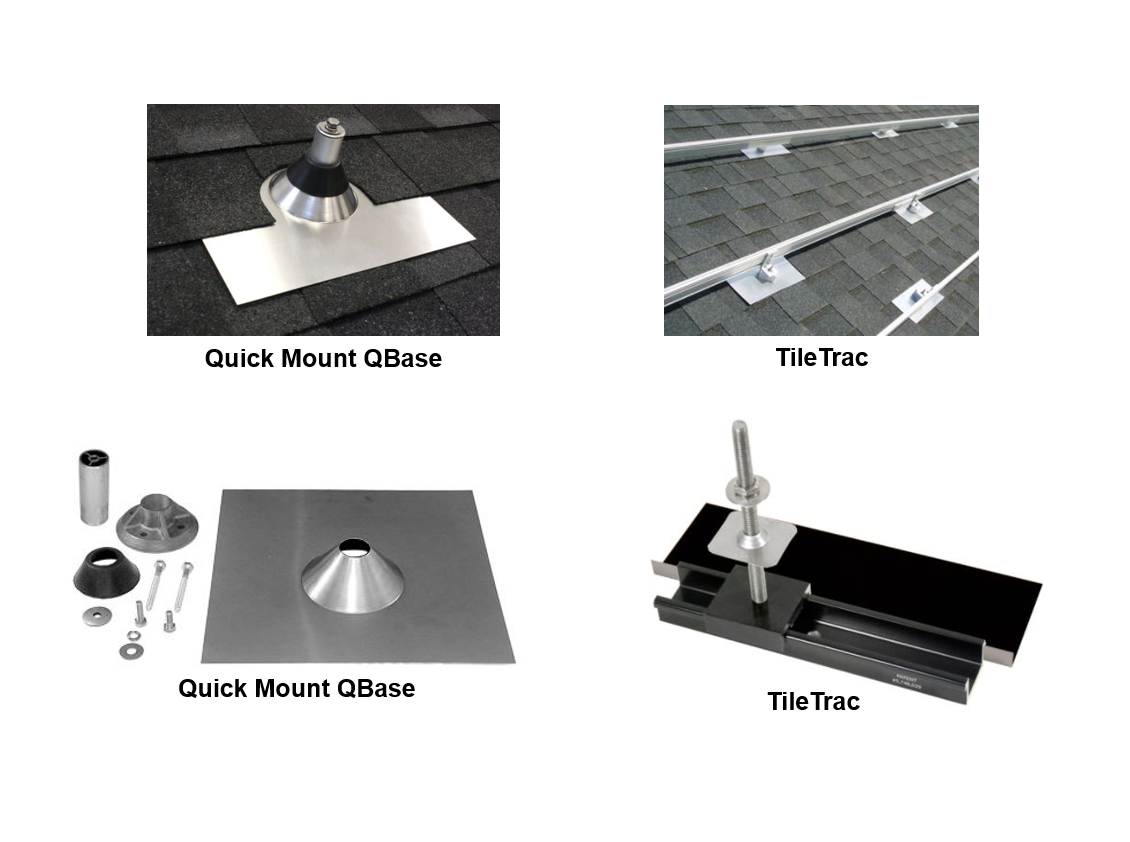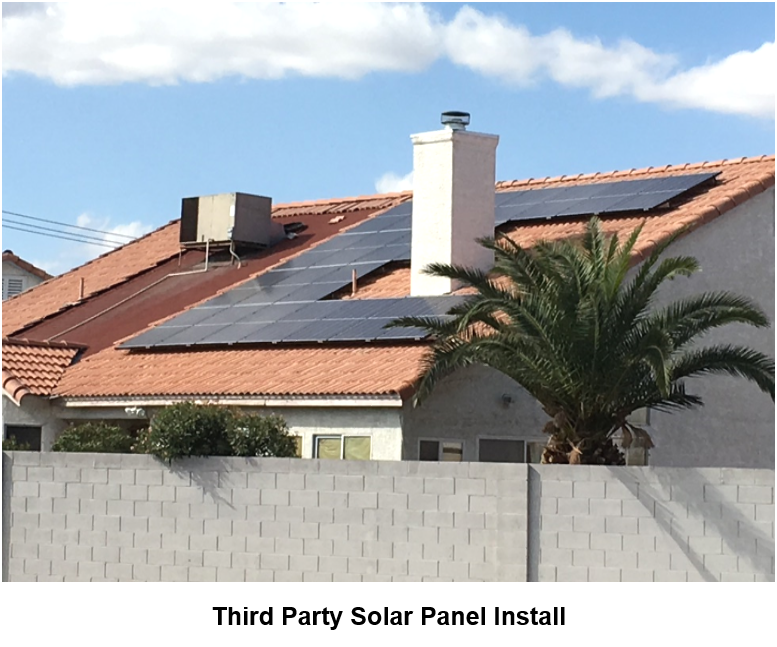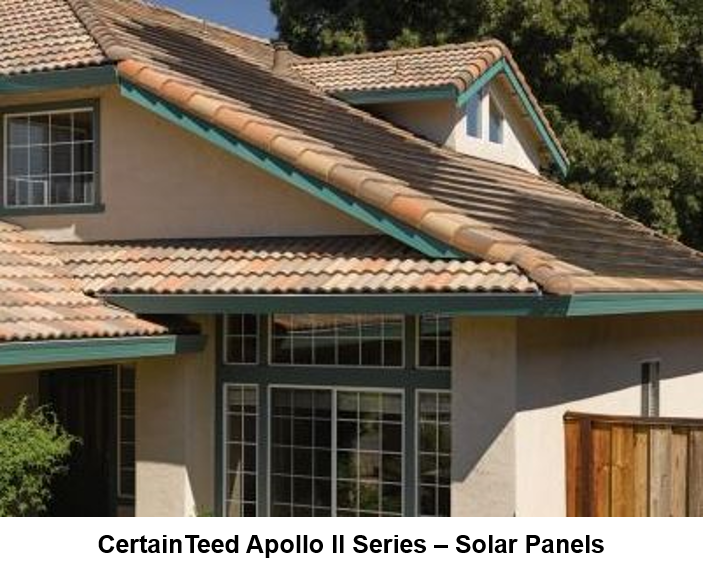By: Mark Crawford - Field Consultant - Level 4
The origins of solar panels can be traced all the way back to the 7th Century B.C. However, it wasn’t until the early 2,000s that roof mounted solar panels became more common in residential and commercial construction. Today, many state legislatures are moving towards green energy and “Leadership in Energy and Environmental Design” (LEED), and are requiring that photovoltaic electrical systems be integrated into new master plans.
Even in regions where solar is not a requirement, more and more builders are beginning to offer solar panels or are building “solar ready” roofs that are prepared for aftermarket installation. The reason? Solar energy is not only efficient and better for the environment, but in recent studies, builders have found that having solar panels on their homes have allowed them to sell homes faster and even for a higher premium than houses without panels.
Although there are many benefits involved in including solar panels on new homes, builders must be aware of the consequences of installing the panels if not addressed correctly. There are a number of factors to consider when making the decision to install roof mounted solar panels. Ask yourself:
- Is the roofing system compatible?
- Which mounting system am I using?
- Who is installing the solar panels?
- For builders who are providing solar ready roofing systems – do my home buyers know of the precautions they must take in contracting with a third party solar panel installer?
- Is my design team considering life safety issues associated with solar installations?
If these questions are not addressed prior to the installation, the probability of a roof failure and subsequent water damage is extremely high. In fact, according to Aaron Nitzkin, CEO of Solar Roof Dynamics, “As many as 40-percent of roofs with solar installations in California were leaking after just one rain event in 2016”.
In this Tech Alert, we aim to help builders protect their investment by providing you with the information you need to address the factors involved in installing roof mounted solar panels.
Is the Roofing System Compatible?
Low Slope Roofs
Modern low slope roofing systems are often covered with EPDM “ethylene propylene diene monomer” a synthetic rubber compound, PVC “thermoplastic poly vinyl chloride” a polymer membrane, or TPO “thermal plastic olefin” a polypropylene and ethylene propylene rubber that is fused together. All these systems work extremely well at preventing water damage beneath them when properly installed and maintained. Water leaks or premature failures with these types of roof systems are often caused by the following:
- Improvements such as solar panels being mounted on them.
- Non-compatible sealants being applied to the roof membrane to seal punctures from installations such as the mounting of solar panel racks.
- Not allowing the installed membrane to dissipate heat.
It’s important to understand that modern low slope roof products were never designed to be penetrated after their initial install, nor were they designed to withstand prolonged exposure to a heat source. The American Society for Testing and Materials (ASTM) also became aware of frequent single ply membrane seam failures where solar panels were installed and continues to perform additional research and tests to improve the properties used to manufacture single ply membranes. However, the last published revision to ASTM D6878/D6878M-17 “Standard Specification for Thermoplastic Polyolefin Based Sheet Roofing” was in 2011. Over six years later, there are still no real suggestions on how to combat this known failure point where solar panels are erected.
Pitch Roofs
Most installed pitch roof systems are typically covered with an asphalt shingle, composite tile or concrete tile. Asphalt shingle tiles become brittle when exposed to heat and therefore need to be able to breathe to meet its full useful life expectancy. Composite tiles tend to warp when exposed to heat. Concrete tiles often crack or break when walked upon. (Solar panels require routine maintenance. This therefore poses a problem for concrete tiles, as there is a greater chance of them being damaged after each visit).
Solar panels are a great source of electrical energy, however, one of their drawbacks is that they generate a significant amount of heat beneath them. Solar panels are typically placed a few inches above an installed roof product, and therefore provide very little space for the heat to escape. As a result, the trapped heat can lead to premature degradation of roof products.
This trapped heat becomes a problem when asphalt shingles or modern low slope roofing products are installed since sources of heat cause these products to wear prematurely and often leads to water damage long before the manufacturer warranty was to expire. It’s also important to review the roof manufacturer express warranty to determine if it’s voided with the installation of roof mounted solar panels; as ASTM has not yet updated their standards for roofing material performance regarding solar panel installations.
What Mounting System are You Using?
There are four different types of track mounting systems available (Ballast, Adhered, Penetrating and Mechanical). The proper selection will depend on the type of roof design you have as well as the type of roof covering you’re using.
1) Ballast System: Ballast systems use dead weight to hold the solar panel racks above the roof membrane - so no drilling or penetrating of the roof materials are required for its install. However, one of the draw backs of a ballast system is the roof ballasts are large and in areas subject to heavy rain or snow events, the storm water can back up behind the ballast. This will create a dam effect which may cause water damage to the structure following a rain event.
2) Adhered Panel: Adhered panels are a great option, however, their initial investment cost often makes them prohibitive for installation. One of the main advantages of adhered panels over the traditional rack mounted system, is that the solar panels are integrated or weaved into the roof covering. This type of design and install addresses some of the known water leak issues present with pitch roof rack mounted systems.
3) Penetrating Fastener: As its name states, the system uses roof penetrations to secure the system. One of the main disadvantages to this type of system, especially on post-roof installs is that the roof penetration points need to be sealed to bring the roof system back to a water tight state. Depending on who is applying the sealant and the sealants useful life, both will have an impact on whether a pre-mature water leak occurs.
Most pitch roof designs where solar panel systems are going to be installed over industry norm roof coverings (asphalt shingle, composite tile and concrete tile) are mounted with either a Quick Mount QBase or a TileTrac penetrating fastener. Each use a lag bolt or structural fasteners to secure the solar panel track mounting system through the roof sheathing and into the structure’s roof truss.
Both penetrating fastening systems have their advantages. QBase uses a double panelized flashing system that’s integrated into the roofing system to help aid in preventing water leaks via EPDM rubber boots and grommets after its install. Whereas TileTrac uses a sub-flashing membrane at its lag bolt attachment area with a secondary flashing member above the roof to seal the roof penetration point. Both mounting type systems are easily integrated into roofs comprised of asphalt shingle, composite tile and concrete tiles. One point to note, is while the QBase system offers a greater level of protection against water intrusion, it’s cost is significantly higher than that of the TileTrac system. In terms of cost differences between the two popular types of pitch roof mounting systems, QBase has an average wholesale cost of $25 per unit, whereas TileTrac’s average wholesale cost for one unit is $10. However, TileTrac fastening and sealing type designs have a higher tendency to leak. Therefore, the builder should have a cost/benefit analysis performed to determine which system is better suited to their needs.
Mechanically Fastened: Mechanically fastened systems are typically used on standing seam metal roof panels. The main reason why standing seam metal roofs use this unique type of fastening system is that the metal roof panels are crimped to one another at their vertical flange points which creates the metal roof panel sealed seam area. Additionally, penetrations through metal roofs must be incorporated into their design at time of installation to allow for the install of flashing materials. Penetrating metal roof panels after their install typically leads to water leaks afterwards since applied sealants do not always make a weather tight seal on standing seam metal roof panels. Because of these restrictions, clamps are attached at the standing seam vertical edge and the solar panel rack is then simply secured to the mechanically fastened clamps.
Who is Installing the Solar Panels?
The majority of companies offering solar panel installations are not certified roofing contractors but are likely licensed electricians. As such, most solar panel installers are not experts in how to properly seal a roof penetration. Although nearly all roof mounting systems for solar panels are designed to be leak-free, there is no guarantee that there will not be water damage, as these mounts were not designed by roofing material manufacturers. Additionally, nearly all roofing material manufacturers note in their limited product warranty that liability only pertains to the following areas:
- Structural deterioration of product from normal exposure to the elements.
- Latent or concealed manufacturing defects.
It’s important to contract with a roofing company that offers solar or solar ready installations. By approaching the solar option from this perspective, both product installations become properly integrated into one another during the new home construction process. Additionally, you’ll lessen the likelihood of roof leaks and costly water damage. Remember, the roofer, is an expert in roof installations whereas electrical companies are not roofing experts. An electrician will still need to install and wire the panels to one-another, but they will no longer be responsible for installing the mounting system and making the actual roof penetrations.
Do Your Homebuyers Know the Potential Consequences of Third Party Solar Panel Installations?
This is an important area for new homebuilders, as the standard new-builder warranty that you transfer to buyers may not protect them in the event of roof modifications by others. Additionally, most new homebuyers are simply unaware that the install of solar panels on their new roof by a third party can void their manufacturer roof warranty. Is the roof solar panel ready? Quality Built suggests that you review your current new homebuyer disclosure forms with your legal counsel to clarify product warranty transfer especially in areas where third party modifications are likely to occur.
Is Your Design Team Considering Life Safety Issues Associated with Solar Installations?
The NFPA “National Fire Protection Association”, ICC “International Code Council” and DHS “Department of Homeland Security” all made significant changes to their respective requirements where roof top solar panels are erected in response to recent structural fires where solar panels were present. Even if solar panels are not connected to the structure’s electrical system, the panels are still generating energy when they are exposed to either natural light or artificial light. This creates an electrocution hazard for first responders as they attempt to extinguish the structure’s fire.
Additionally, roof mounted panels prevent fire-fighting personnel from gaining access to the roof area to release built-up heat in the structure, which may result in a total loss of the structure. This can be of importance in buildings where structural steel members are present, or if the solar panels metal support structure is not protected from fire. It is therefore extremely important that the building’s design team be made aware of that roof top solar may be added to the structure at a later date to allow for its proper install. The reason this is important is that steel begins to fail when it reaches an external surface temperature of around 1,022 degrees Fahrenheit. Most room fires reach a temperature between 1,652-1,832 degrees Fahrenheit with a fire flashover point occurring at a much lower temperature at around 1,112 degrees Fahrenheit. Therefore, it’s highly probable that the actual solar system may lose its structural support and become a hazard to those beneath it long before the structure’s support members begin to fail from the fire’s heat.
Then there’s the known issue within the Solar industry, which requires additional consideration. Which is, solar panel systems can and will ignite on their own. This is an area often overlooked when one considers whether to offer solar systems or not. Self-ignition by roof mounted solar systems can cause a catastrophic failure of the structure while also endangering the lives of those within the structure when the panels spontaneously ignite.
One of the reasons why fire rated roof covering materials fail quicker where solar panels are installed is because of the highly combustible plastic material used to manufacture a solar panel. This highly flammable underside backing material found on most solar panels burns at higher temperature than most A, B or C rated roof covering materials were designed to resist and thus prevent subsequent flame spread. Because of this significant temperature difference, fire rated roof materials are simply unable to prevent the fire from spreading quickly, thus allowing the fire’s flash over-point to occur quicker than what the structure’s fire spread was originally designed and anticipated for. Because of this unintended design change, fire damage occurs quicker and inhabitants have less time to exit the structure.
The Future of Solar Panels
In terms of the next generation of solar panel systems, Dow Chemical Company, CertainTeed, currently offers their Apollo II BIPV “Building Integrated Photovoltaic Technology” solar panels that are weaved into CertainTeed’s traditional roof products. CertainTeed goes so far as to offer a 15-year workmanship warranty on this product and additionally backs it with a 110 mph wind warranty making it an ideal product candidate in coastal areas subjected to high winds.
Additionally, a few months ago, Tesla introduced their BIPV product offering that fully integrates into traditional style roof profiles. Tesla’s webpage notes, their product offering will be available in the following styles: Textured, Smooth, Tuscan and Slate.
Then there’s the semi-transparent solar panels that can be integrated into a structure exterior façade cladding material, therefore eliminating the need for roof mounted systems on mid-rise and high-rise structures. Some of the advantages that BIPV have over the traditional rack mounted solar systems is their weight advantage; cost savings by eliminating roof covering material where the BIPV are installed on a roof structure; and then the overall appearance of the structure. Since BIPV are integrated into the structure’s overall design this eliminates the need to make penetrations into the roofing system for their install, thus further eliminating the possibility of a roof leak and subsequent water damage. Additionally, they don’t appear as an add-on element or an afterthought to someone passing by. As for life-safety concerns to first-responders and possible fire hazards. Yes, the electrocution hazard from natural and artificial light sources still remains, but the overhead fall hazard is eliminated by deleting the traditional roof mounted solar rack system. As to the concern for self-ignition, BIPV panel designs are still relatively new to the building industry within the U.S.
Conclusion
With the rising popularity of roof mounted solar panels in residential and commercial construction, it is important that builders take the necessary precautions to ensure that they are protecting their investment. Whether a builder is selling a home that already has the panels installed, or a home that has a “solar ready” roof, there is a lot of planning that must be done to avoid facing costly failures. The following is a re-cap of the potential shortfalls if a builder does not plan in advance and answer the questions outlined within the article:
- Water intrusion issues linked to roof failures.
- Solar panel installers are not typically certified roofing contractors. They therefore are not experts in sealing roof penetrations.
- If heat is not dissipated appropriately, the result could be a premature degradation of roof products (e.g. asphalt or composite tiles), or even a life safety issue such as a structural fire.
- Concrete tiles often crack or break when walked upon.
- Roof warranties may be voided if a roof mounted solar system is installed, especially if a home buyer were to install solar panels following the sale.
With so much to consider, Quality Built recommends that a builder seeks consulting from a professional third-party QA inspection company to assist them in conducting a Technical Plan Review to address the systems and components used, heat ventilation and warranty specifications for current or future installs; water testing on roofs following solar panel installation to address any potential water intrusion sites; inspection of integration and penetrations at roof final.
For more information on how to integrate photovoltaic systems into your product mix, the U.S. Department of Energy (DOE) offers a great start. DOE information can be obtained by visiting: www.energy.gov/eere/sunshot/homebuilders.
About the Author
Mark Crawford is a seasoned Project Manager and Quality Assurance Consultant with over 20 years of expertise in the construction industry. Mark has professionally designed and managed vertical construction and civil improvement projects throughout the United States. He has in-depth knowledge in civil engineering and architecture, along with extensive experience in building inspections, building codes, design standards, local ordinances, forensic building failure analysis, construction defects and expert witness testimony.
You can reach Mark at [email protected]
References:
https://modernize.com/home-ideas/29531/the-history-of-solar-panels
http://www.sfpe.org/page/FPE_ET_Issue_92/Fire-Concerns-with-Roof-Mounted-Solar-Panels.htm
https://www.wired.com/2017/05/rooftop-solar-panels-great-planet-terrible-firefighters
http://builderonline.com/building/building-science/poor-solar-installs-leading-to-roof-damage
https://www.tporoofing.org/?s=2017&submit=Search
https://www.tesla.com/solarroof




